
I am a meteorologist and a former youth leader at church…I have a lot to say on both subjects…and then some
Still a heavy rain threat in central Texas today. Also a heavy rain threat for Mid-Atlantic States with the remnants of Chantal. Severe threat in the Nebraska (since updated to include South Dakota). Heavy rain threat in the Lower Great Lakes and New England. Northern Michigan and South Texas forecasts, and started doing a Great Loop forecast by sections. This is a work in progress.
X: https://x.com/nmirecwx
Facebook: https://facebook.com/recreational.weather
Instagram: https://instagram.com/recreational.weather
Things mentioned in this video…
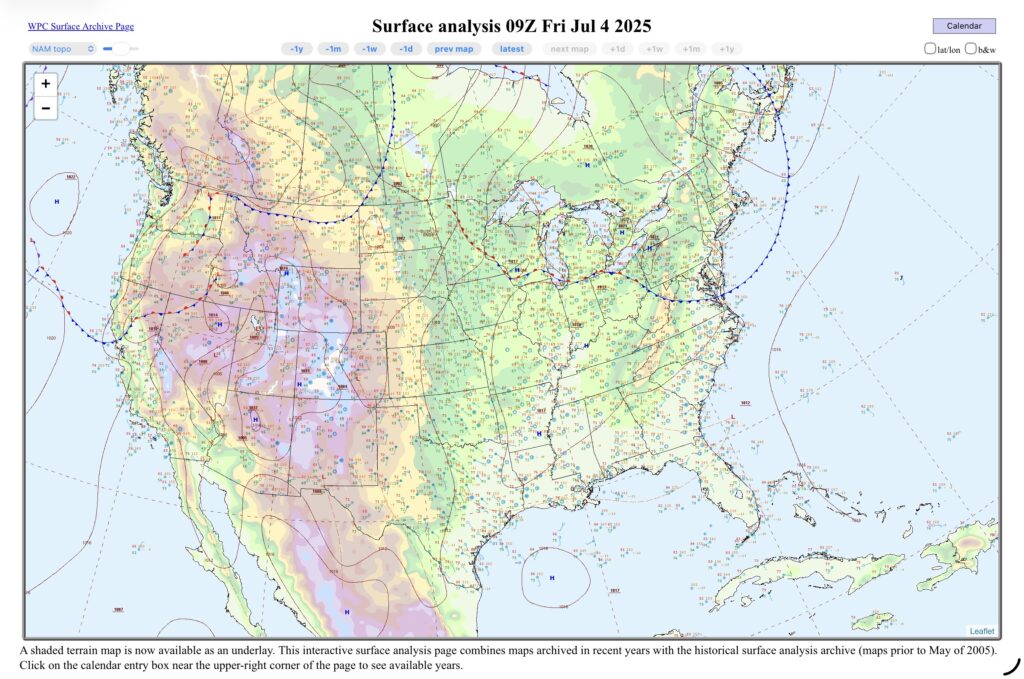
Looking at the surface map this morning you will notice a theme…the main weather will be where this morning’s fronts and lows are. Not that they aren’t usually, but the marginal and slight risk areas are aligned pretty well.
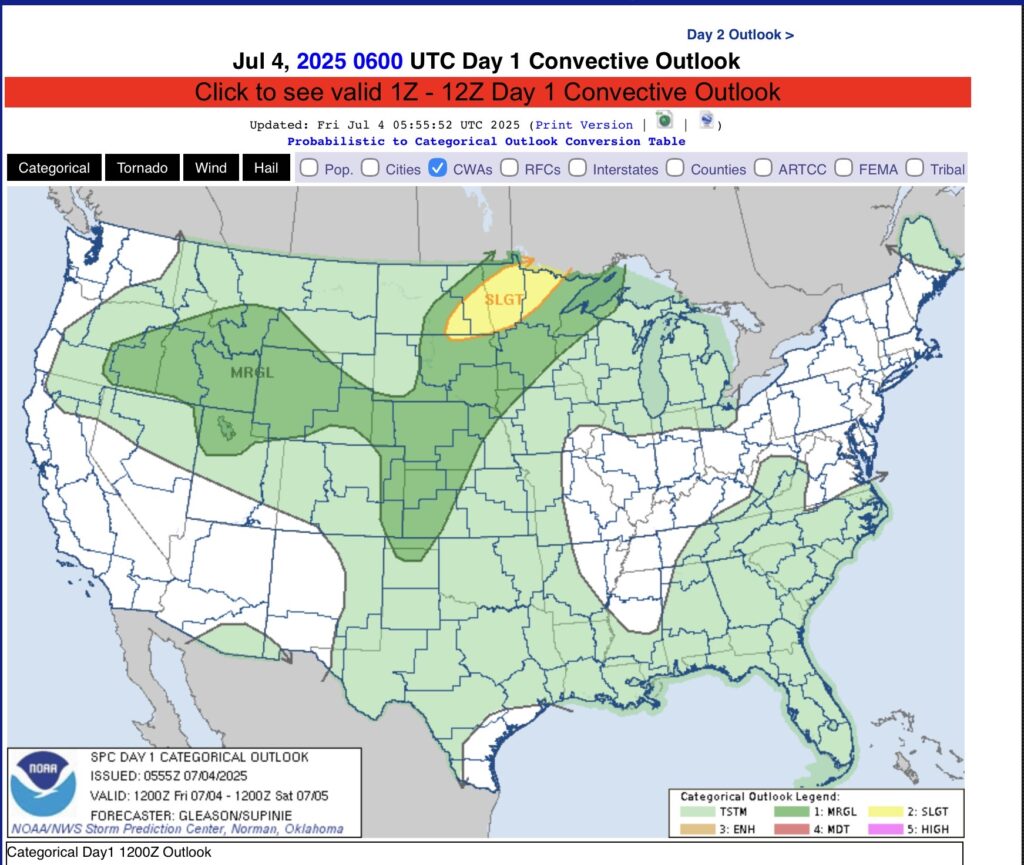
The slight risk is near the surface low near Minnesota and North Dakota, with a general (level 0 of 5 in severity) risk of thunderstorms along the warm front that stretches into Michigan. Looking at the local APX (Gaylord, MI) forecast late day 15-25% Chance for thunderstorms. Of course, the exception is the south where there is high pressure, but loads of moisture for afternoon thunderstorms to pop up.

WPC has a much more scaled back out look for today with chances for heavy rain in eastern North Dakota a northern Minnesota. Another MCS in Central Texas tonight (there is ongoing flooding in San Angelo as I write this). And then Florida with the tropical moisture.
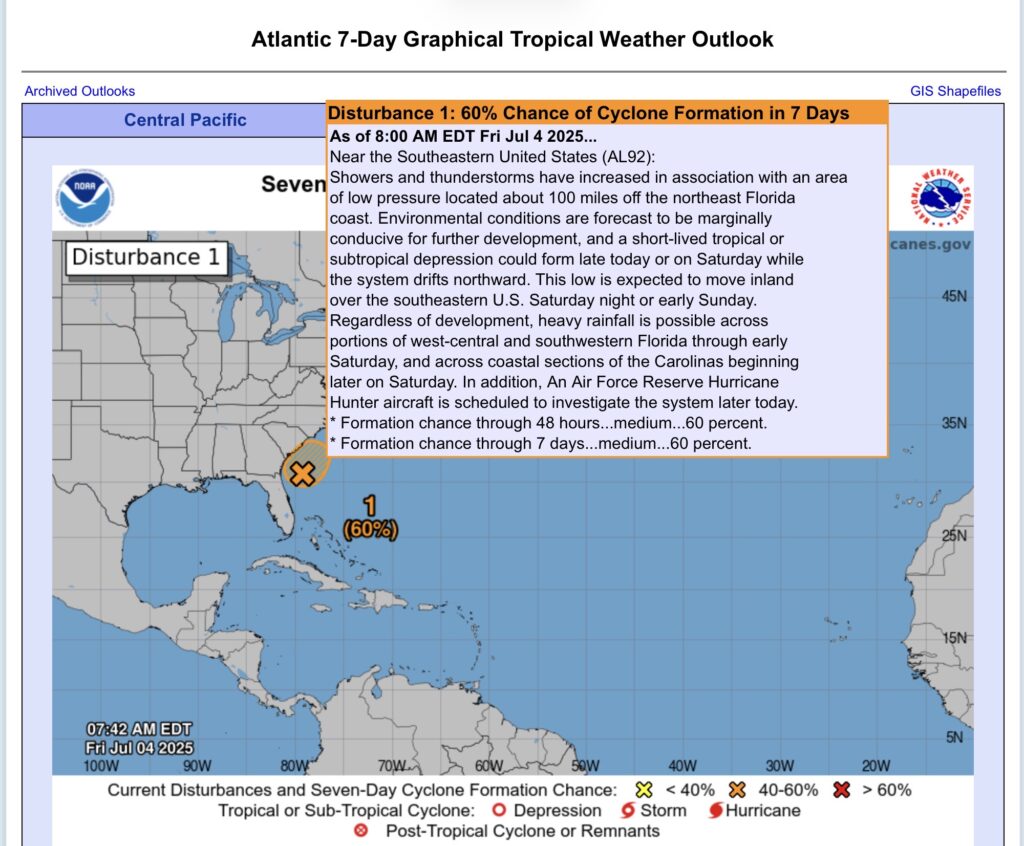
Last, but not least, the SE Atlantic states are now at a 60% chance for formation in the next 2 days with the remnants of the cold front where thunderstorms are beginning to form a low pressure system that will be a tropical system. I left the discussion for it on the graphic.
So there you go. Happy Fourth of July!
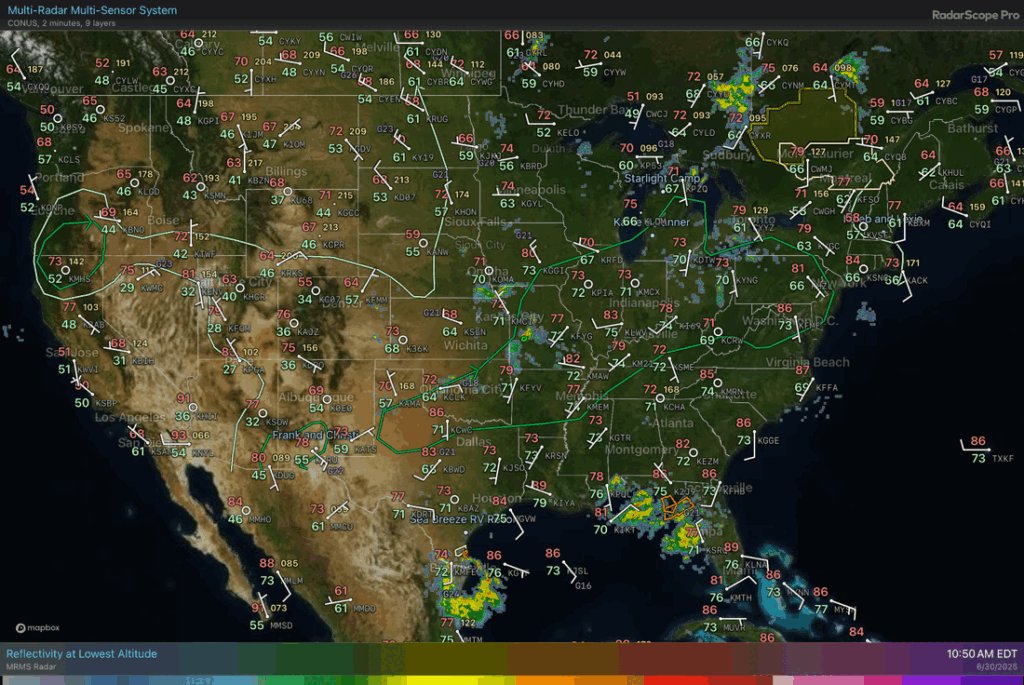
We are at that transition time of day, when the thunderstorm complexes are falling apart (usually), and the afternoon convection are puffy cumulus clouds on satellite, with a few showers around. Such is the MRMS radar page above. The hot spots from last night are ebbing, with the main fronts still showing some organized rain.
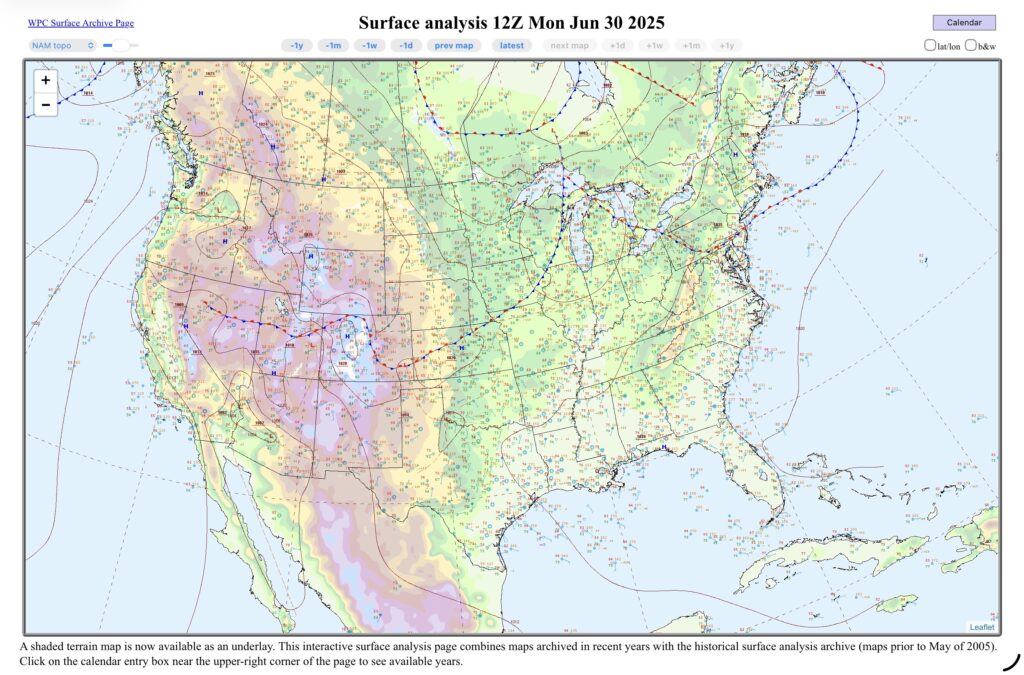
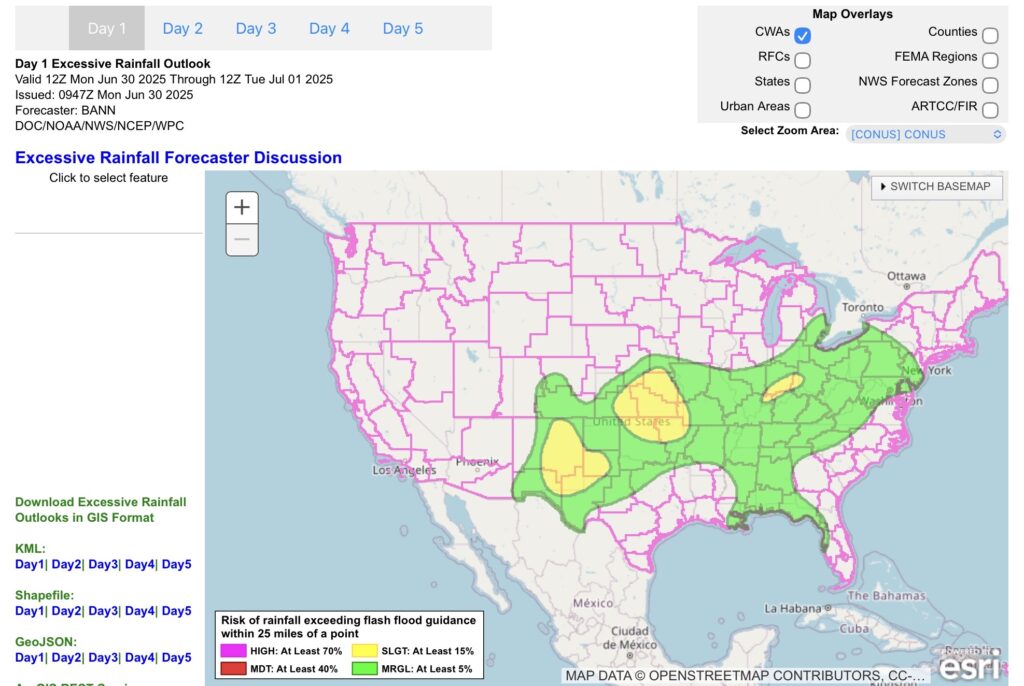
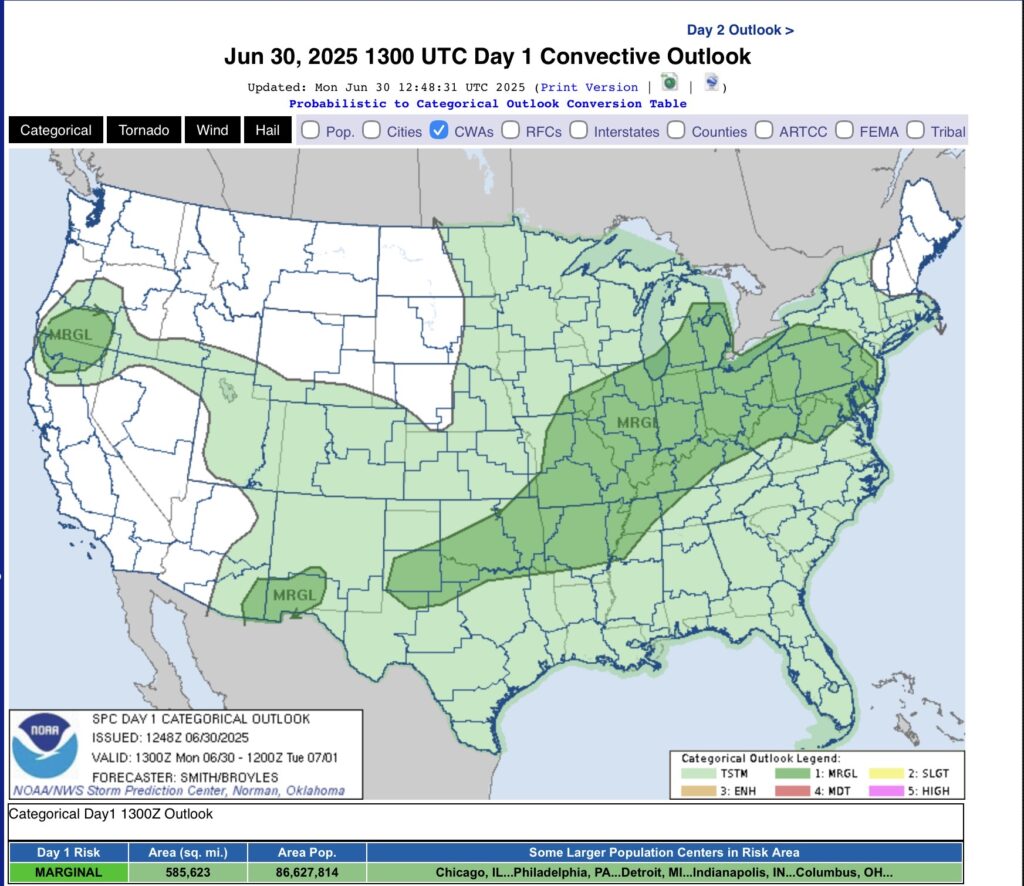
The map on the left is the surface map from 8am this morning with cold front pushing into the Upper Great Lakes. The showers and thunderstorms associated with it have either died, or pushed off into Canada or Lake Huron. That front trails southwest, into eastern Colorado, with what’s left from last night’s convection dying in Kansas. Otherwise, there is still a shortwave in the eastern Gulf, near Florida’s Big Bend region which is kicking off showers and thunderstorms, and the remnants of Barry in Mexico and the western Gulf.
So, the day’s heaviest rain (middle image from WPC) is expected along that cold front along the Ohio River Valley, back into Kansas. Heavy rain is also possible in New Mexico (Surprise!, not!) from the monsoonal moisture, the front, and some of the remnants of Barry.
On the image to the right (SPC day 1 outlook), there is a large area of marginal risk (level 1 of 5) along the front this morning from the Lower Great Lakes to West Texas and New Mexico. Some of this may fire off in the afternoon, but the storms are expected to be strong to severe. Otherwise, thunderstorms are expected in the eastern half of the country.
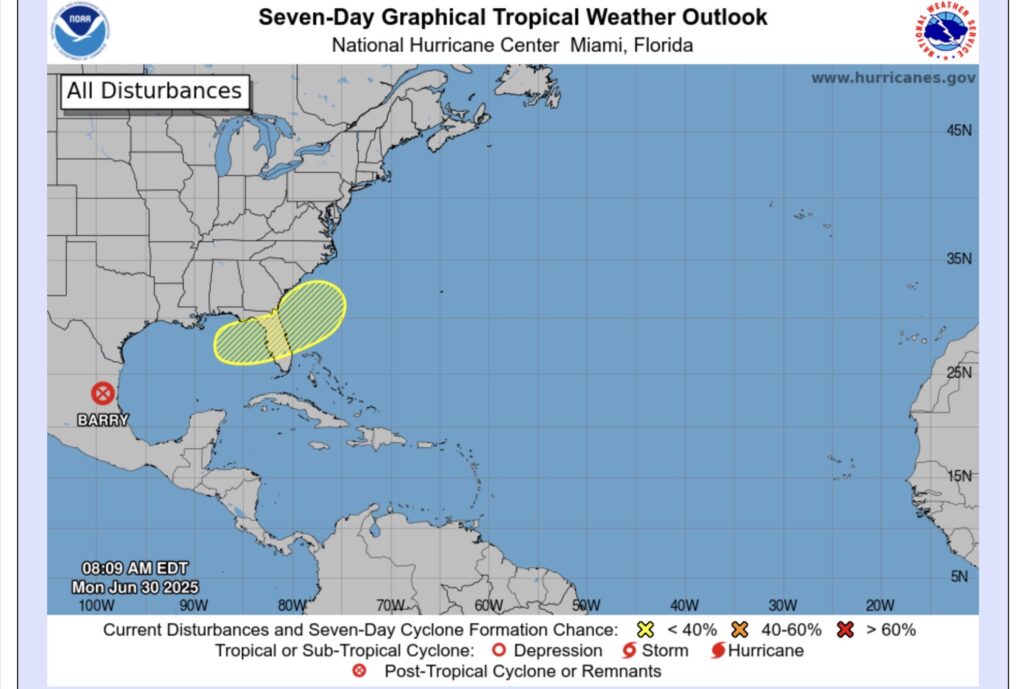
The last thing is the remnants of Barry, which we have covered, and the 20% chance for tropical development during the next 7 days. The front, that we have discussed earlier, will eventually reach Southeastern states and stretch across the Florida peninsula.
The thunderstorms are could produce a circulation. The ECMWF suggests mainly in the Atlantic off of Jacksonville this weekend, while the GEFS (ensemble GFS) mainly in the Big Bend of the eastern Gulf this weekend. Either way, there will be a lot of rain come this weekend over Florida, especially the northern part.
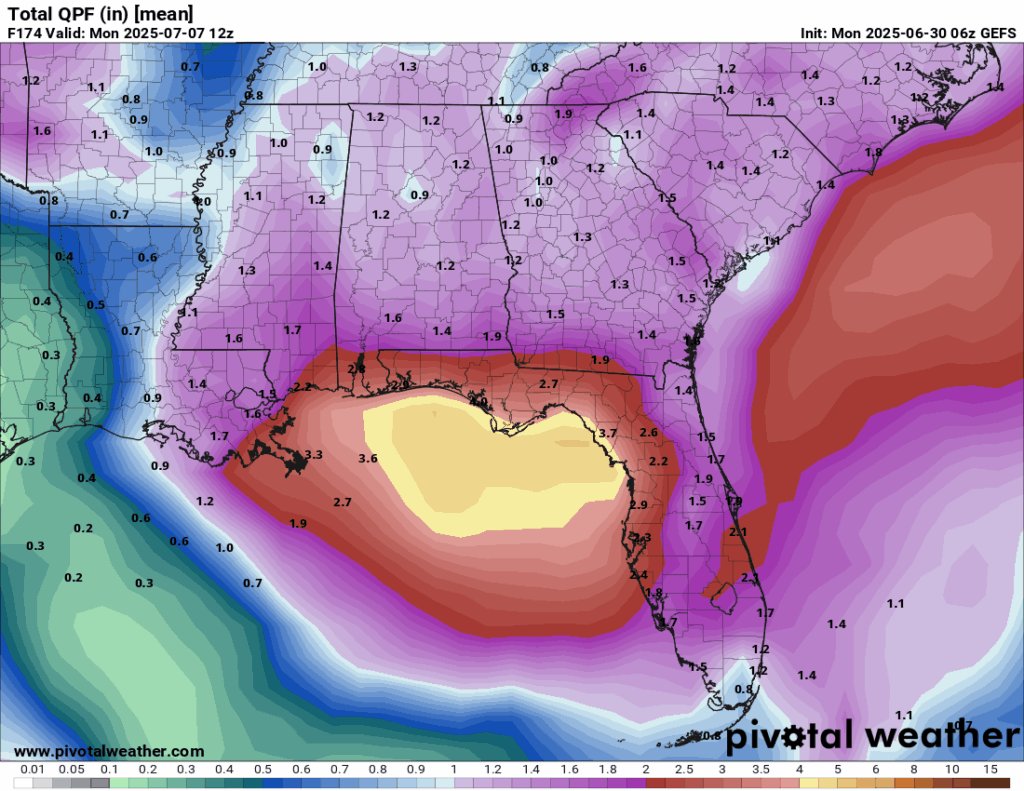
This is the total mean rainfall expected on the GFS ensembles through Monday morning. With over 2.5” in northern Florida and the panhandle, while heaviest rain is in the Gulf. We’ll see. (The ECMWF 06z run doesn’t go out that far).
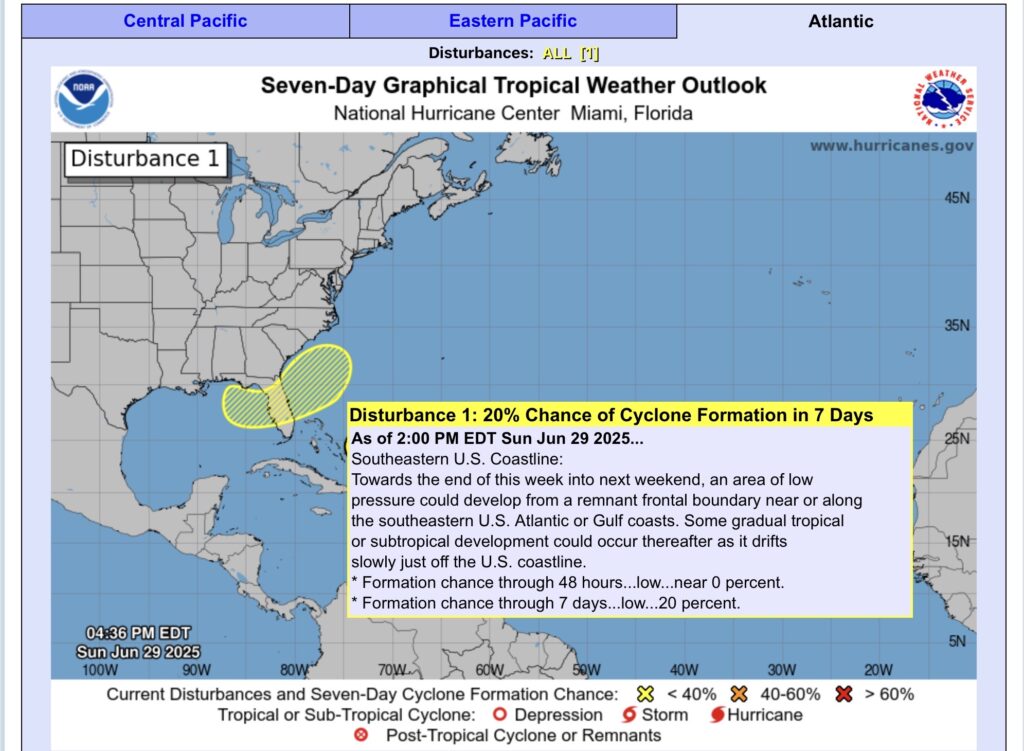
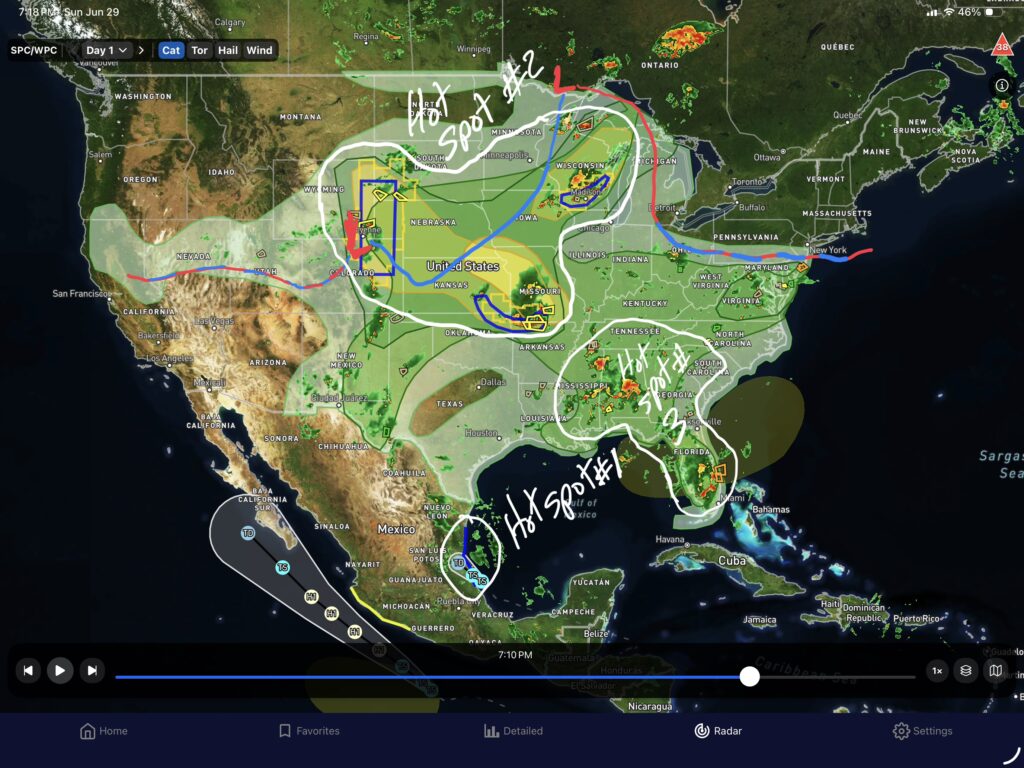

In the gallery, I have three graphics. The one on the right is the 5PM (EDT) map analysis that I traced onto the Hot Spot Map that screenshotted (the center graphic) from Everything Weather app, authored by Cory Mottice. I really like the radar map, and the overlays. It includes a lot for the radar part, and the forecasts are all from the NWS NDFD(National Digital Forecast Database). This allows forecasts down to a point. Let’s jump into the Hot Spots, and then look at a possible hot spot for the weekend.
Hot Spot #1…The Mexican coast south of Brownsville, TX will have Tropical Storm (TS) Barry, the second tropical storm of the season.


The biggest impact will be the rain from Barry as it comes ashore. The BRO radar (Brownsville, TX) on the right, shows some of the rain beginning to show up along the mountains of the Sierra Madre Oriental 10” of rain are possible, inland with 2-6 inches around the region.
Hot Spot #2…the cold front, low pressure, and the three slight risks (levels 2 of 5) for severe weather. It looks like there is currently 3 Severe Thunderstorm watches along this front, with some corresponding slight risks for exceeding the flash guidance. The thunderstorms are running into some very juicy air with 1.50”+ precipitable water values. Except the storms in Wyoming and Colorado, where they are still above normal with 0.75 to 1.25” of PWAT(precipitable water) which is above the 75th percentile for moisture this time of year.
Hot Spot #3 is related (the moisture) to #2, but without the fronts…Instead of fronts, there is a low moving 500 mb shortwave low moving through the southeastern states, with 1.75 to 2.0+” of precipitable water. The fronts are expected to push through the southeast, causing more heavy rain in the region, and the potential for severe weather.
Which leads us to a possible Future Hot Spot(graphic on the left)…As mentioned, the cold front in the Plains States, is expected to move into the southeastern states, and then offshore along the Atlantic and the Gulf Coast, across the Florida peninsula. The models haven’t nailed down a particular wave, but with the front stalled, and low shear, a tropical wave/depression could (currently 10% chance of development within the next 7 days). The ECMWF and the GFS have ensemble members that show development off the coast of Georgia, but most over the Big Bend (FL) region of the Gulf. So, that area is to be watched. Are the tropics heating up? Well, it’s possible, we usually see an uptick by the end of July, climatologically, but each year is different. I guess it’s time to start watching the MJO forecast to see if there are any longer wave disturbances coming.
I’m going to see how this goes over. I’m thinking that I will do morning videos (Coffee and a Weather Map with Jeff), and then at night do a post on the hot spots for the night. If there are no hot spots, then no post. We’ll see how that goes. Alright, let’s jump into it…
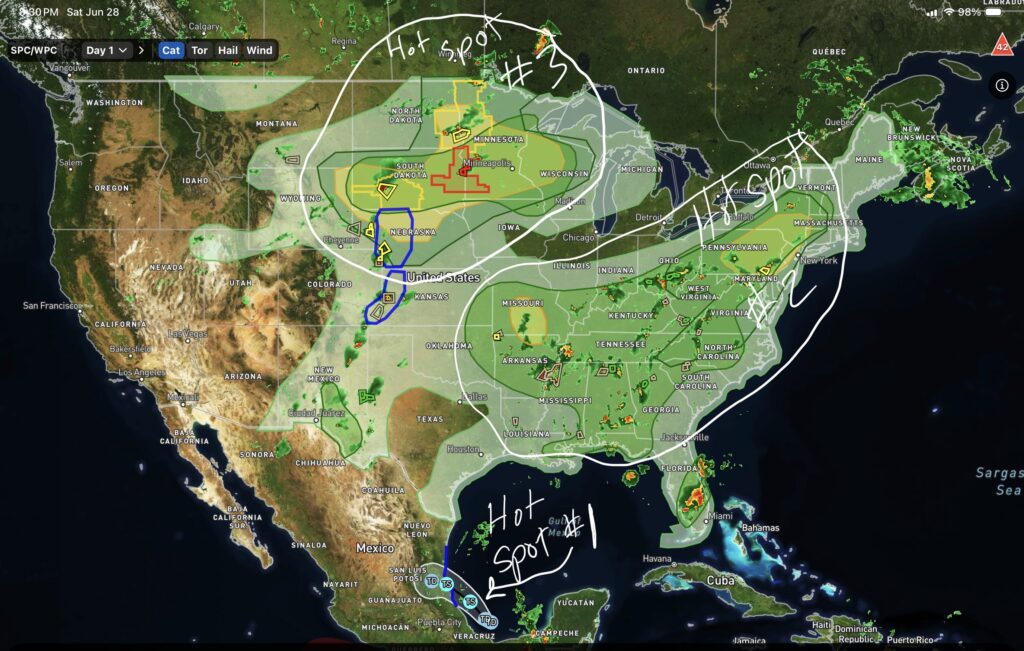
The first hot spot is TD #2, in the Gulf. The wave that has progressed into a depression and will likely become Tropical Storm Barry overnight or Sunday morning.
Hot Spot #2 is Low pressure and front that stretches from western Quebec to the northern Appalachian Mountains, and then into the Ohio Valley. While the front stretches there, the marginal severe threat stretches into the Southeastern States.
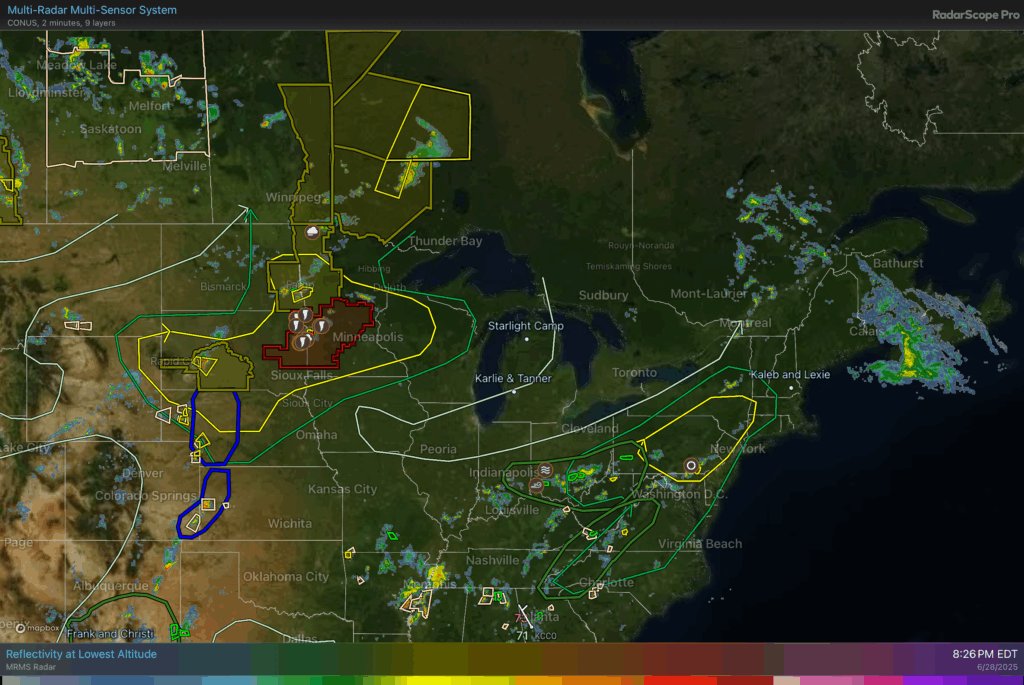
You can see it better in this map with the slight and marginal risks outlined in te east and southeast.
Hot spot #3 is the Northern Plains, with the Tornado watch in South Dakota and Minnesota. There are some Severe thunderstorm watches surrounding it, plus a couple of convective and precipitation discussions.
All of these are well covered, if you listen to Max Velocity’s live stream. It doesn’t look like Ryan Hall is streaming, but it he does have his Y’all bot channel so you can watch that if you want a stream.
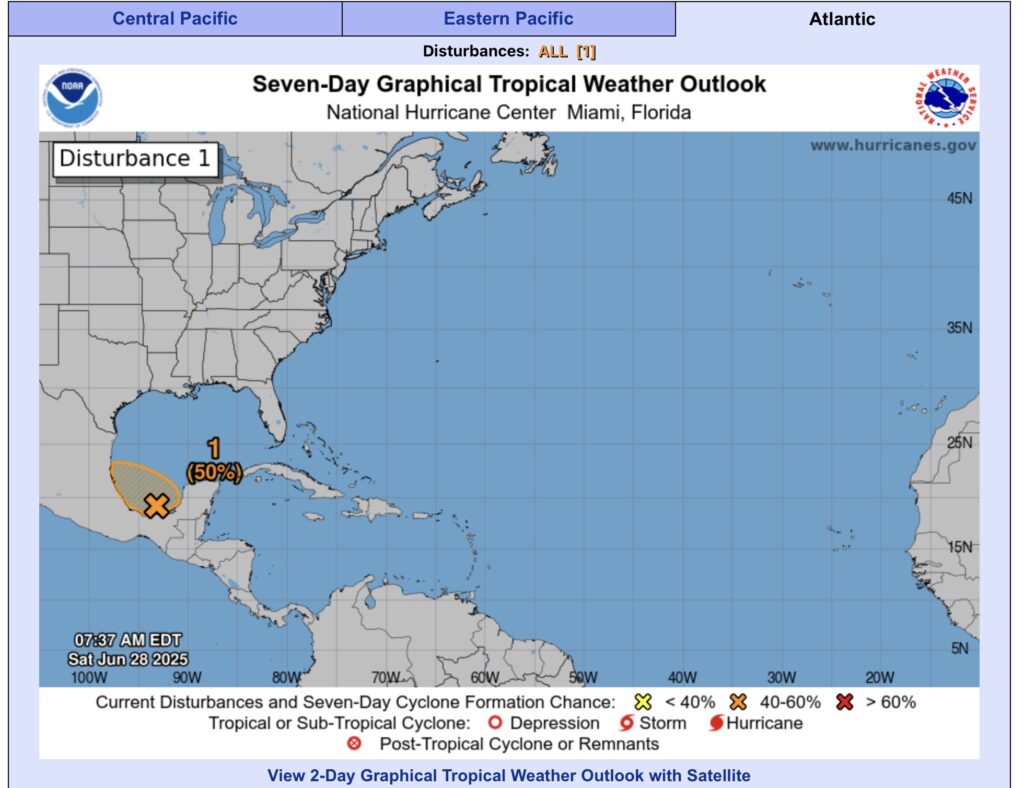
91L has been increased to a medium (50%) chance of development during the next 2 days. It looks like it would stay south of Brownsville, but it will depend on its development whether it would be a threat or not. The only reason I say that is due to Alberto last year. Alberto developed tropical storm force winds on the north side, up by Corpus Christi, even though the land fall was south of Brownsville. I’m not saying that’s what will happen, but it is something to keep in mind.
Otherwise, here’s the link to 91L on the Tropical Tidbits site with all of the satellite, observations, and model plots.
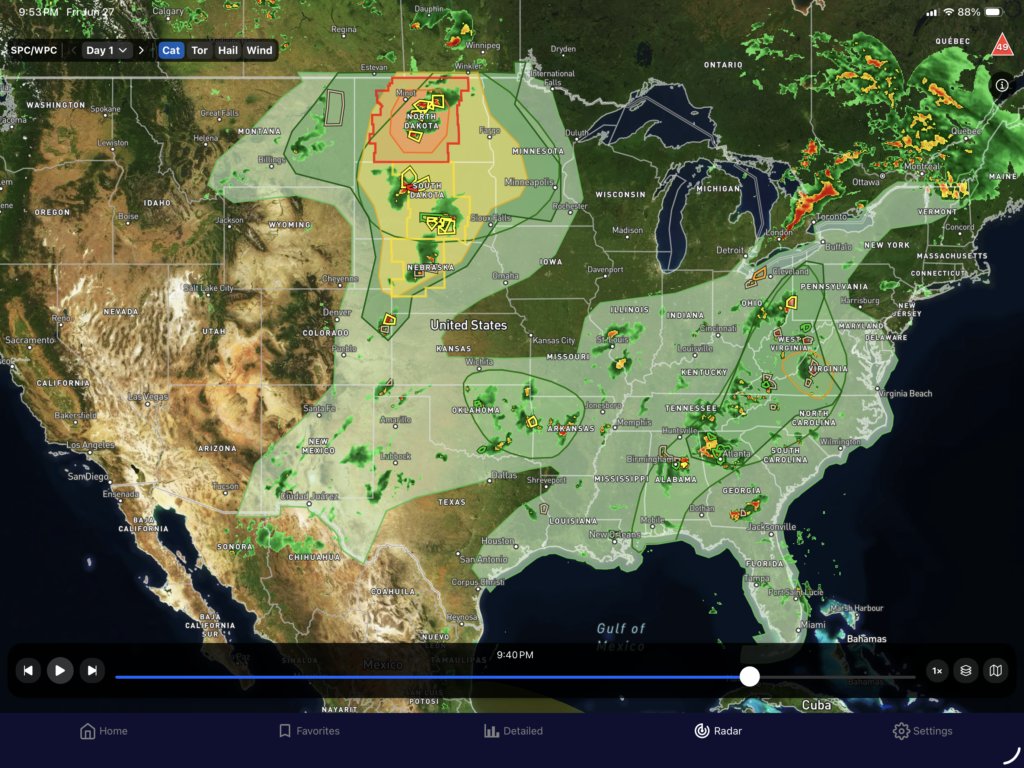
Since I’m out of town again, and looking for a boat, I haven’t had a chance to do any new videos or posts. So once the grandkids are in bed, I thought that I would look at the hot spots over the country, especially with the N Michigan and S Texas pretty much quiet tonight. For tonight, if you are away from city lights you probably will be able to see the Bootids Meteor shower peak tonight.
Currently, there is a tornado watch in NorthDakota, and a Severe Thunderstorm watch in South Dakota and Nebraska. This includes an enhanced risk (3 of 5) for severe weather and slight risk (1 of 5) of excessive heavy rain. This is due to the next low and cold front moving into the Northern Plains.
The other hot spot is in the east where the front that passed through the Upper Great Lakes yesterday is now pushing to move through New England and the Mid-Atlantic states, along the warm front that extends from the low in Canada.
For both areas keep watch and be safe.